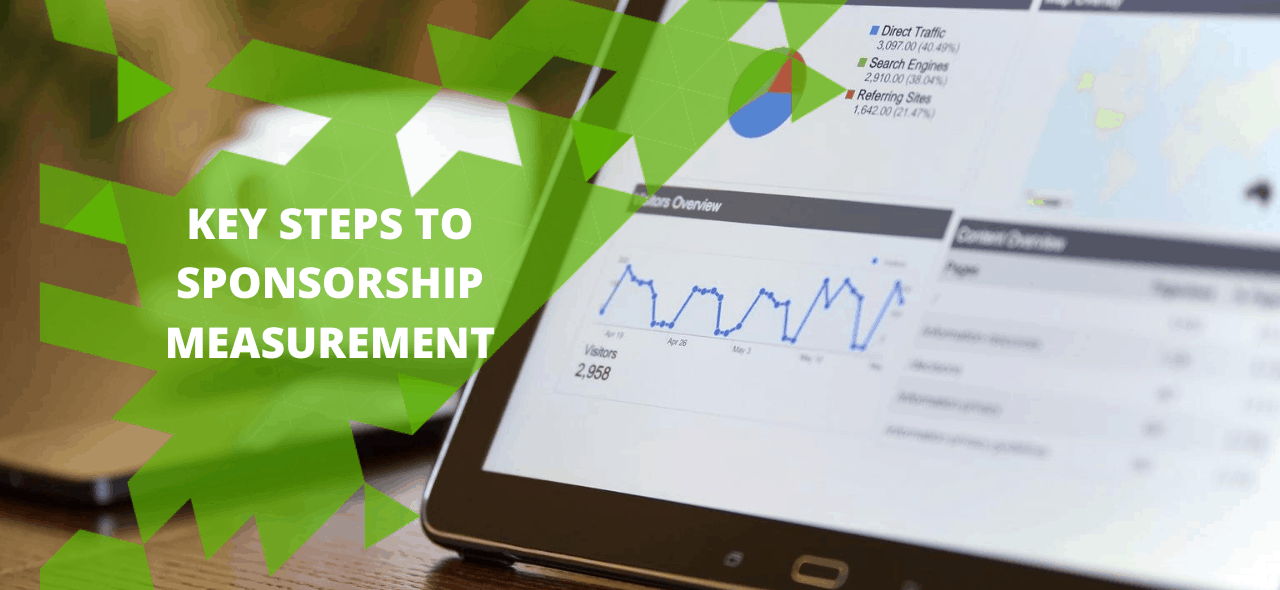
By Chris Myers
How do you determine if your sponsorship was a success or not? It is a question we are asked often. The answer to the question has a lot of layers but can be summed up in sponsorship measurement.
I use partnership instead of sponsorship for a specific reason. The measuring of a sponsorship not only falls onto the laps of the sponsor itself, but it is arguably the most important thing the property can offer the sponsor after they have signed the dotted line.
As I mentioned, there are a lot of layers to success. There are also a lot of layers to measuring sponsorship. For the sake of this blog we will share steps in how you and your sponsorship partner can set yourselves up for measuring success.
Set Goals and Objectives
This should be a straightforward process, because you would not have purchased the sponsorship without knowing exactly what your goals and objectives for the sponsorship were, correct? Examples of sponsorship goals and objectives can include increasing sales or leads, improving brand image, or increasing overall brand awareness.
Talk to your partner and stakeholders
After you know your goals, it is time to have a conversation with your partner. I say partner again, because a property should not be afraid to initiate this conversation. You need to have an honest conversation about the goal of the sponsorship so both parties can be aiming towards measuring the right things. A great example of this is telling your partner the exact goal, like increasing leads. Let them know that the success of this partnership will only come by meeting that goal. If only the brand knows what they want to get out of the sponsorship, then the property will struggle to provide the right data. Another issue we often see is while the sponsorship owner inside a brand knows the goals, the other stakeholders do not. Make sure there is alignment between your digital, PR, marketing and any other department involved to know what the goals are so activities are aligned towards them.
Set what you are measuring
There is so much data to track in and around sponsorships. Social, digital, and advertising metrics. Add to that on-site lead generation, attendance, cost per CPM, and the list can go on and on and on. Take your goals and objectives and work with your partner on what actually needs to be measured. Are you chasing lead generation? Track attendance versus those who signed up to receive your communication. Is it awareness you are seeking? Make sure you are tracking social visits, banner ad views, any radio or broadcast metrics. By tying metrics directly to your goals, it will allow both sides to focus when it comes to reporting and data collection. It also will help shrink the size of future reports that may or may not provide you the detail you are looking for.
Set Benchmarks
Great! You are measuring and you know what you are measuring. But what does success look like. Please be realistic in this activity. Do not expect 100% of all attendees to come by your display. However, work with your partner and set realistic benchmarks so you can look back to those goals, especially in year 1, and determine if the sponsorship needs any tweaking or if your goals need to be changed. Realistic goals can include raising your monthly earned media around an event by 10-20% or capturing 20% or more of the overall attendance through your activations. I once worked with a sponsor who wanted every fan to be handed a sign upon entering the stadium and then hold that sign up at the exact right moment with 100% activation. This was an unrealistic goal, there is immediate attrition with ingress promos, not to mention people use the restrooms and go to concession stands pre-game as well. So, remember, be realistic. As you enter into the second or third year of an agreement go back and review these benchmarks and reset expectations each year. Taking key learnings each year will make benchmarks stronger and stronger.
Measure then Report
This section could be broken up into two different steps. When you measure, don’t worry about the future output. Just measure, collect and store the data. Period. That is how you measure. Collecting data with no predestined outcome is an important step. It allows you to not change the “goal posts” with your benchmarks.
After you have collected your data, then you report on it. You take the hard data and tell the story you want to tell and to see if you are hitting your benchmarks. Too often you want to jump into reporting because you are trying to dumb something down for someone else or want to tell the story when it hasn’t been fully written.
Follow these steps and you will be one step closer to making sure your sponsorship portfolio is operating at a high level and meeting objectives. Success, when it comes to sponsorships, can be measured.
ARE YOU READY TO SELL POWERFUL SPONSORSHIPS?
Test Your Sponsorship Readiness Today
Find out where you stand in just a few minutes, after taking our assessment.
This brief assessment will give you a sense of your readiness to attract and fulfill powerful sponsorships.
At the end of the assessment, we’ll provide you with a sponsorship readiness score, a detailed description of what that score means and some tips about how to improve your overall score and score per section.
Check out our previous Blog Posts to learn more on topics surrounding post-pandemic sponsorship. Contact Us for specific content questions.



